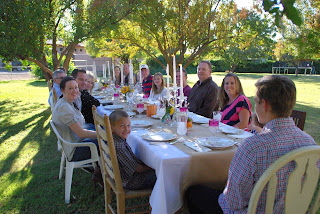 It's easy to see the parallel to the story of Adam and Eve and the forbidden fruit, but is there a modern parallel as well? Brian VanDeMark makes a comparison to the beginning of the nuclear age in his book Pandora's Keepers: Nine Men and the Atomic Bomb. Instead of simply retelling the story of the Manhattan Project or the subsequent nuclear arms race, VanDeMark focuses on nine men who were involved in it: Leo Szilard, Enrico Fermi, I. I. Rabi, Niels Bohr, Edward Teller, Ernest Lawrence, Arthur Compton, Robert Oppenheimer, and Hans Bethe. Some were theoreticists whose insights paved the way, others were instrumental in refining the uranium and plutonium, and others put it all together in the mountains of New Mexico. All were incredibly brilliant men who changed the world.
It's easy to see the parallel to the story of Adam and Eve and the forbidden fruit, but is there a modern parallel as well? Brian VanDeMark makes a comparison to the beginning of the nuclear age in his book Pandora's Keepers: Nine Men and the Atomic Bomb. Instead of simply retelling the story of the Manhattan Project or the subsequent nuclear arms race, VanDeMark focuses on nine men who were involved in it: Leo Szilard, Enrico Fermi, I. I. Rabi, Niels Bohr, Edward Teller, Ernest Lawrence, Arthur Compton, Robert Oppenheimer, and Hans Bethe. Some were theoreticists whose insights paved the way, others were instrumental in refining the uranium and plutonium, and others put it all together in the mountains of New Mexico. All were incredibly brilliant men who changed the world.Many of them had been forced to leave their European homelands by the threat of Nazism and found a welcoming community in America of fellow scientists and thinkers. Physics in those days was a mostly theoretical exercise with little practical application. But when it became known that Nazi scientists were working on splitting the atom to unleash its destructive power, the Manhattan Project was born with a goal of developing an atomic bomb first. But it wasn't just the threat that drove them; it was also the opportunity of a lifetime to pursue an intense professional curiosity.
But for some, seeing the devastation wrought on civilians in Hiroshima and Nagasaki caused anxiety over their work, even describing it as a "sin." They understood their willing role in developing the bomb, but were conflicted by the obvious fact that it had indeed ended the war. Some argued for international control of the bomb and warned of an arms race, but not all. When international negotiations failed and the Soviet Union successfully tested their own atomic bomb (using information gained by espionage) some again lent their talents to the race to develop even bigger thermonuclear weapons, which used atoms of hydrogen – the hydrogen or H bomb – and release hundreds of times the destructive energy of the bombs dropped in WWII.
VanDeMark's praise of authors like Richard Rhodes and Robert Dallek made me wonder if this would simply be another book condemning the U.S., but I was surprised at how fairly he treated the subject. And he shows a talent for bringing the story to life in an exciting way that emphasizes the moral dilemmas of the time and the questions the physicists faced, and that there were no easy answers. There wasn’t just a tremendous amount of research that went into the book but a lot of thought as well. I thought it was both interesting and readable, and it’s one of those books that didn’t get the kind of attention it deserved. (Incidentally, the title of this post comes from a little poem written by Edward Teller for his children.)













